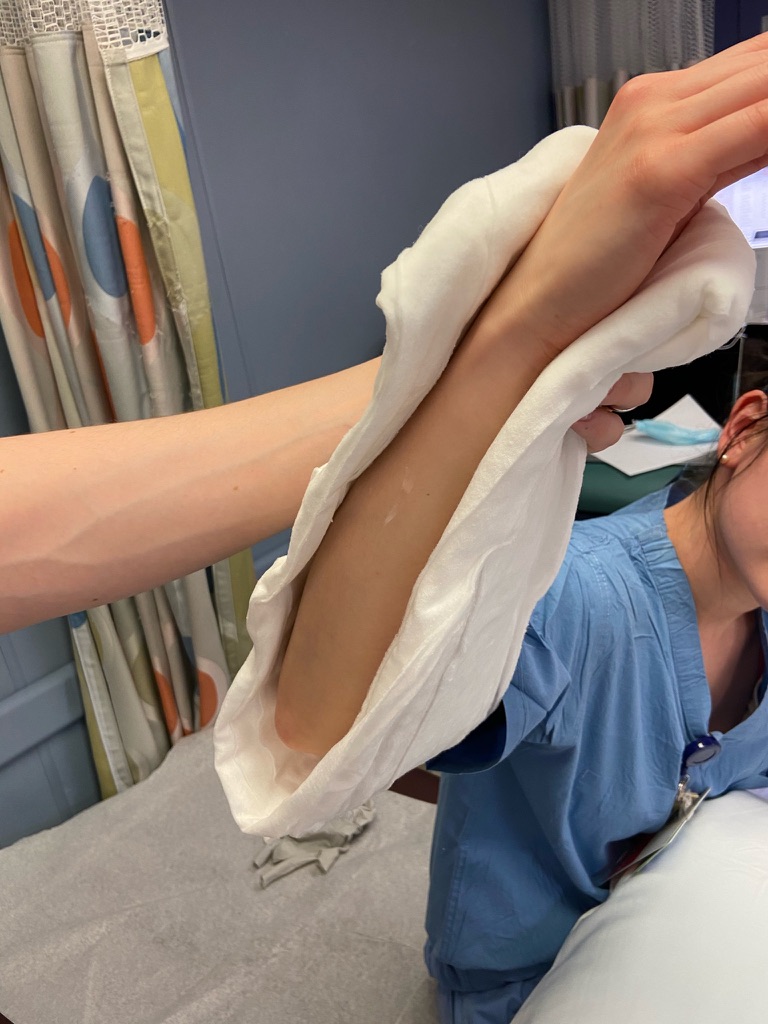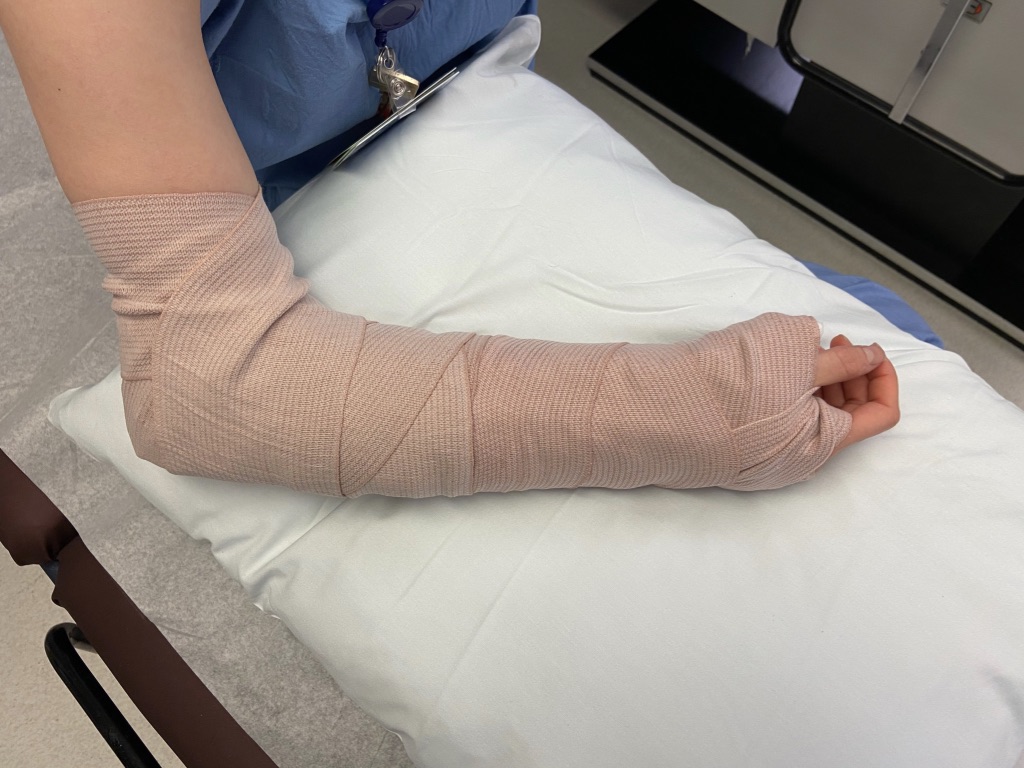Edited by Grace Xiong, Harry Lightset, Brendan Striano - 7/1/2021
Indications/Contraindications
Indications:
- Both bone forearm fracture in adults
- Used in conjunction with posterior slab splint for complex, unstable elbow fracture dislocations
Materials/positioning
Materials:
- 4” plaster, 3 rolls
- 4” ACE wraps, 4 rolls
- 4” Webril, 4 rolls
- Tape

Positioning: Usually in a stretcher with the patient sitting upright
Technique
Measure out splint:
- On the uninjured side, measure the length of the splint using plaster from the dorsal aspect of the wrist posteriorly along the dorsal forearm around the elbow and back volarly to the wrist
Splint preparation:
10-12 layers of plaster and 5 layers of webril
Splint application
- Support the forearm
- Apply the Webril such that it encompasses the forearm and is secure around the elbow

- Apply the ACE wrap to include the hand, extending proximally encircling the forearm and extending past the elbow to the distal aspect of the arm

Pearls & Pitfalls
Potential complications: Oftentimes, fractures of the forearm requiring sugar tong splinting may be at risk of forearm compartment syndrome and neurovascular exams of the hand should be checked regularly. The splint should be taken down if there is any concern.
Tips for efficiency: Adequate support of the forearm is necessary for a well fitting sugar tong splint. An assistant to hold the arm and forearm in place is very helpful.